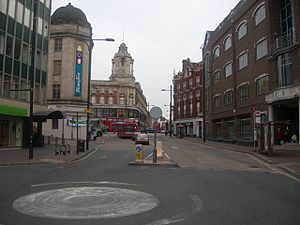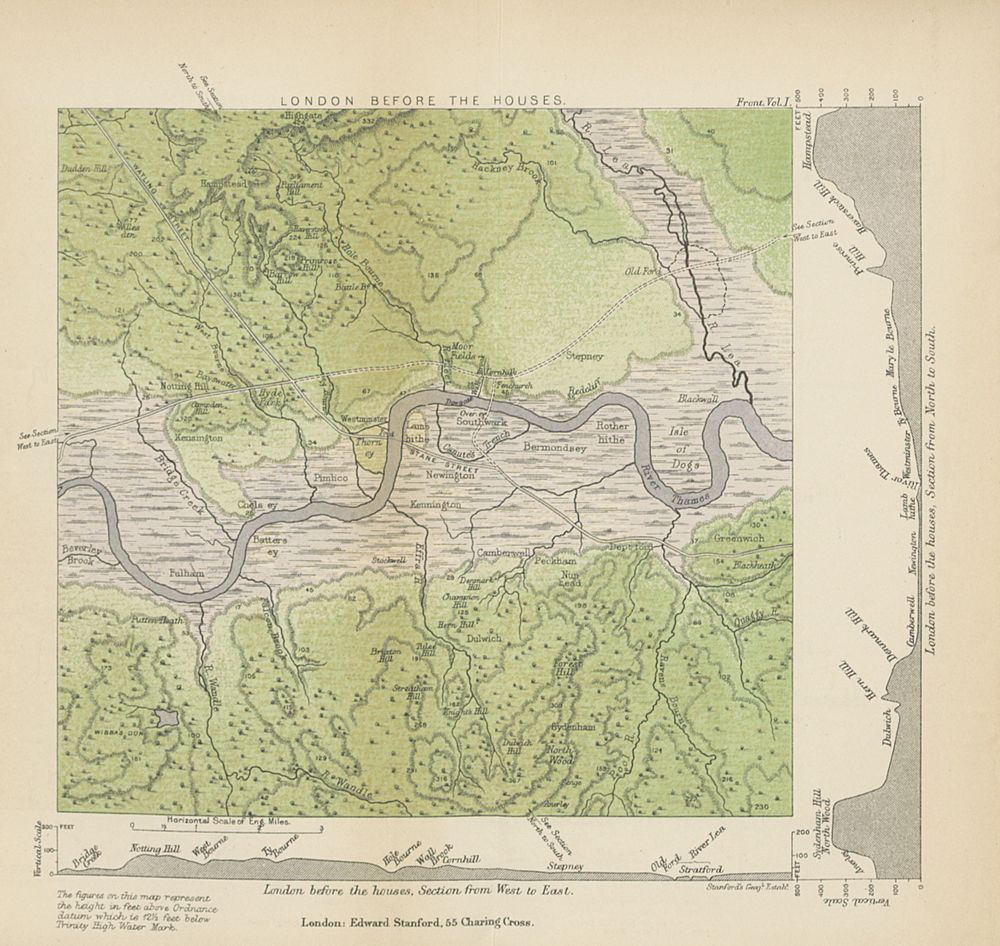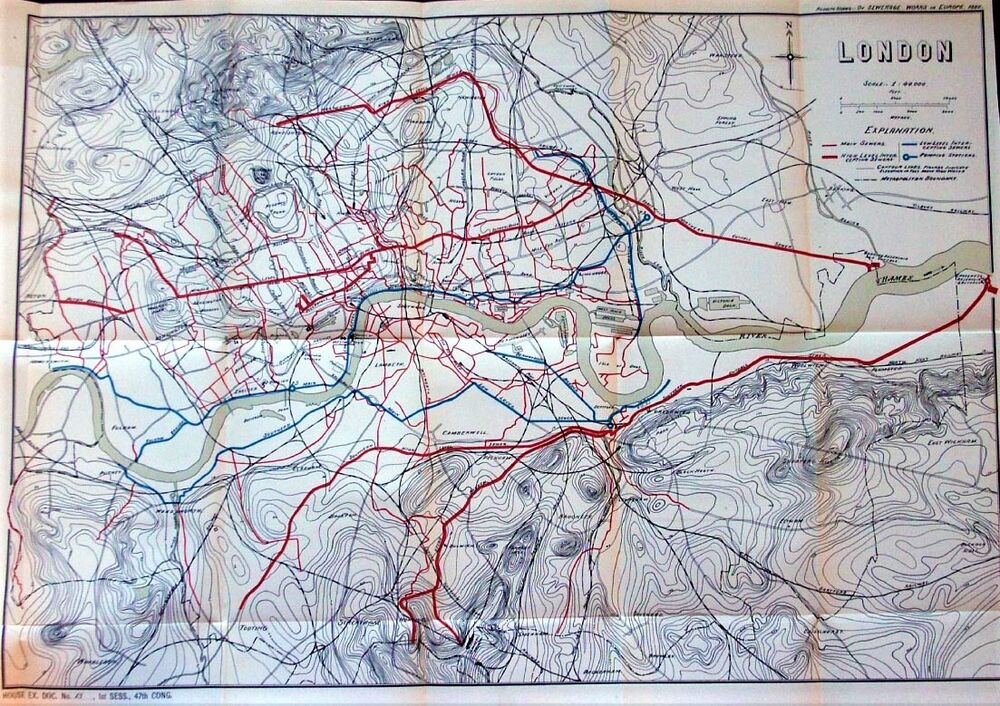Falconbrook facts for kids
The Falconbrook was once a small river in southwest London. It started in areas like Balham and Tooting. From there, it flowed through the south and west parts of Battersea, including Clapham Junction. Finally, it joined the River Thames in London. For a short distance, it even formed the border of Wandsworth Town. This old border is still seen in the SW11/SW18 postcode boundary today.
In the 1860s, the Falconbrook was covered over and turned into a large underground pipe. This pipe is now an important combined sewer, which carries both sewage and rainwater. In 2007, very heavy rain caused this sewer to overflow. Water flooded streets and even some buildings near Falcon Road, close to Clapham Junction station.
Contents
The Falconbrook's Path
The Falconbrook's path now mostly follows a gentle valley. This valley was formed by the stream over many years. In the mid-1800s, as London grew, the stream was replaced by a combined sewer. This sewer carries both wastewater from homes and rainwater.
Where the Stream Started
The Falconbrook had a main source at Streatham Hill. It also had another source to the west, near Furzedown, south of Tooting Bec Common. From Streatham Hill, the stream flowed west through Balham. Then it turned north, just before Wandsworth Common. Here, it was joined by another small stream from Tooting Bec.
The stream continued to carve out a valley. This valley is now followed by streets like St John's Road and Northcote Road in Battersea Rise. Even today, springs that fed the original stream flow under some shops on Streatham High Road. When these shops were built, extra space was made below their basements. This was to handle the water from the springs when they flowed strongly.
The Underground Route Today
The old stream, now a sewer, flows along Drewstead Road and past Woodfield Avenue. It goes through the north of Tooting Bec Common. Then it heads north down Cavendish Road and west along Kenilford Road. It continues along Oldridge Road, turns north by Holy Ghost School, and then along Northcote Road.
After St John's Road, it flows along Falcon Road in Battersea. Just before its end, it turns west. It then empties into the tidal Thames west of Lombard Road and north of the London Heliport. This spot is the western edge of Battersea, right on the border with Wandsworth Town.
What the Falconbrook Was Called
The Falconbrook has had a few different names over time.
Early Names: Hyde Burn and York Brook
The very first name recorded for the stream was the Hyde Burn or Hydebourne. This name appeared in old documents from the years 693 and 695. It might be connected to "Hyde Farm," which was near Tooting Bec Common. The name "Hyde" also relates to an old measurement of land.
From the mid-1400s to the 1800s, the river was known as the York Brook or York Sewer. This name came from "York House." This house belonged to the Archbishops of York and stood where the stream met the Thames. The smaller stream from Tooting Bec Common was sometimes called the York Ditch.
The Falcon Name
The "Falcon" part of the name comes from a noble family, the St Johns. They owned the area of Battersea from about 1627 to 1763. Their family crest, or armorial bearings, featured two golden falcons with their wings spread out.
Many places in the area get their names from this falcon symbol. These include Falcon Park, Falcon Road, "The Falcons" housing estate, the Falcon pub, and Falconbrook Primary School. When the river was covered over, both "Falconbrook" and "York Sewer" were still being used as names.
The Ground Around the Falconbrook
The area where the Falconbrook flowed is mostly made of London Clay. This type of clay does not let water soak through easily. This is different from other rivers in London, like the Lea or Wandle, which flow through different types of soil. The clay ground, combined with the flat land in Battersea, meant the stream often overflowed before the area became a city.
Flooding Issues
Even as far back as 1745, records show that the Falconbrook would sometimes flood. Because the ground is mostly clay and the lower part of the stream's path is flat, it was prone to overflowing.
Today, some separate drainage systems are in place. These help to collect rainwater from parks, roofs, and roads. This stops some of the rainwater from entering the combined sewer system. This helps to reduce pollution in the River Thames.
A very large new pipe, the Thames Tideway Tunnel, is largely complete in 2025. This huge project helps to stop the combined sewers from overflowing into the Thames during heavy rain.
In late 2006, Thames Water worked to fix flooding problems with the Falconbrook sewer in north Balham. This involved closing some roads for the work.
In July 2007, there was very heavy rainfall across the United Kingdom. Because so many hard surfaces like roads and roofs now drain into the Falconbrook sewer, it overflowed. This caused flooding on pavements and roads, including Falcon Road near Clapham Junction. Since then, there have been five more flooding events in that local area.
See also




